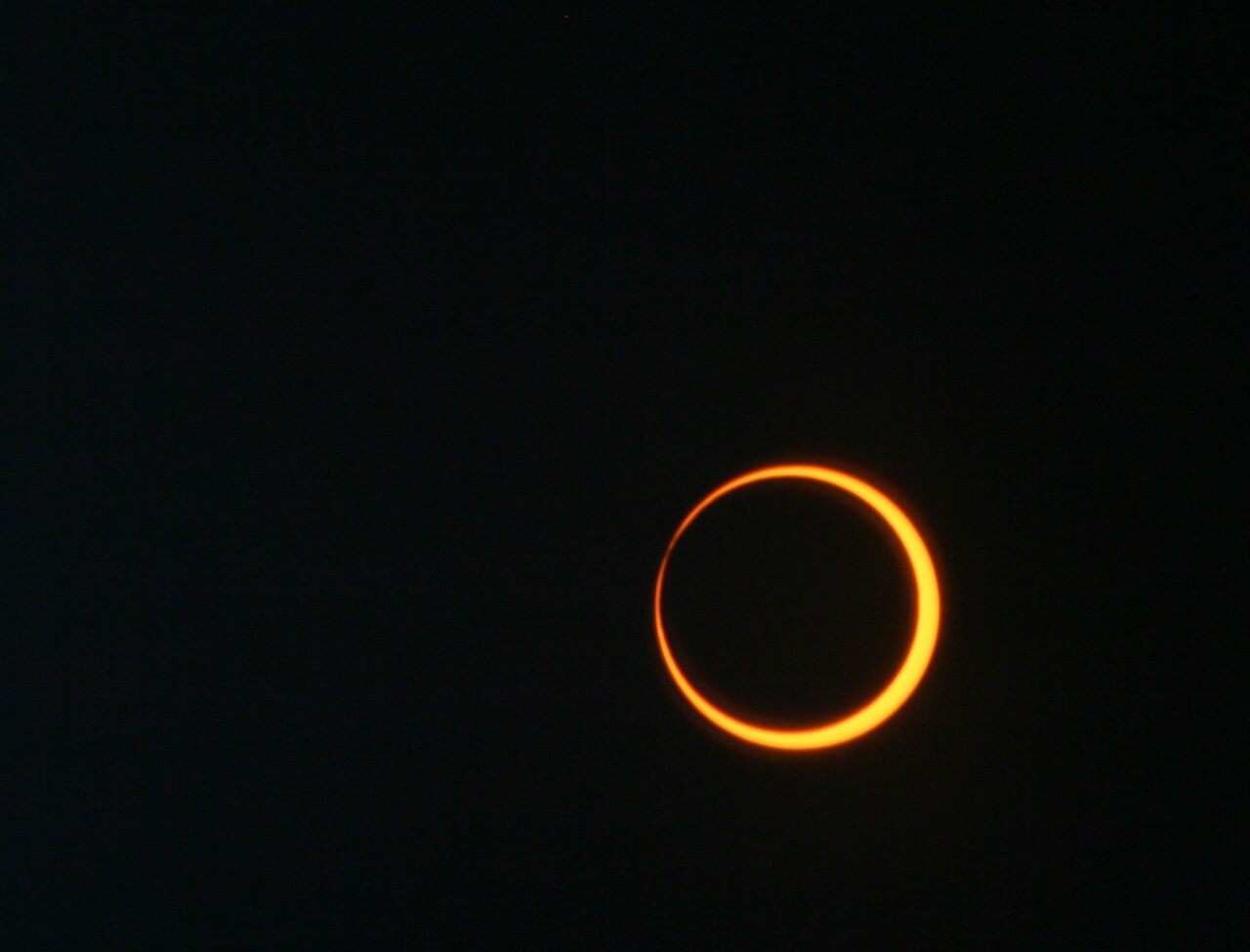Get ready, an Annular Solar Eclipse is happening on October 14th, 2023!
An annular solar eclipse occurs when the Moon passes between the Earth and the Sun, just like a total solar eclipse. The difference with an annular eclipse is the Moon's location. During an annular eclipse, the Moon will be at its farthest point from Earth, known as apogee. Because it's farther away, it will not completely cover the Sun, leaving a "ring of fire." The word annular is Latin for ring-shaped.

In Wisconsin
The path of the total annular solar eclipse will be from Oregon to Texas. Traveling out from that path, less and less of the Sun will be covered by the Moon. Here in Wisconsin, we will have a partial eclipse; the Sun will appear about 40% covered.

Time
In total, the eclipse will last a little over two and a half hours. Here are event times specifically for Southeast Wisconsin:
Start - 10:37 am
Max - 11:56 am
Ends - 1:20 pm
Weather
The ability to see this event depends on the weather. If it's cloudy, we won't be able to see the eclipse. If skies are clear, mostly clear, or even partly cloudy, we will be in for a treat!
Safety
Note, this is an event where you need to wear specialized eye protection. The Moon does not completely block out the Sun during an annular eclipse, meaning there will not be any time during the event when it's safe to take off eye protection. Safe options for watching the eclipse include specialty eclipse glasses or handheld solar viewers. Regular sunglasses will not protect your eyes. Additionally, do not use a camera lens, telescope, or binoculars while using specialty eye protection, this can cause eye injury.
Suppliers of safe solar filers and viewers from the American Astronomical Society.
Indirect viewing
If you don't have specialty eye protection, you can still see the event unfold with an indict viewing method. This includes taking any item with holes, such as a kitchen colander, or a piece of paper with holes punched in it, holding that item out from your body, and looking down at the ground. The shadow you see will show the eclipse phase! A pinhole projector is another method for viewing an eclipse. It only takes a few simple supplies you may already have at home. How to make a box pinhole projector.

The next eclipse in North America will be a Total Solar Eclipse on April 8th, 2024, mark your calendar!



